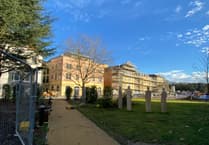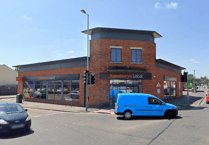CAMPAIGNERS are preparing to up their game to prevent picturesque Kings Pond falling to "urban style" development. Often described as the jewel in Alton's crown, the pond is valued as providing "a little bit of countryside in the centre of the town". It is a quality some feel will be lost if Alton Town Council obtains permission to demolish two ageing rustic bungalows at the north-west corner of the pond and replace them with four two-storey houses. They believe the impact on wildlife will be detrimental, in terms of noise and light pollution, and that the area will lose its charm as a quiet rural backwater. But the council argues that "to do nothing is not an option" and that the build programme is the only way it can afford to address pressing maintenance problems. At present the pond provides a safe recreational space for children, dog walkers and for those who enjoy watching the wildlife. But, warns leading naturalist, Dr June Chatfield, the new houses will impose a solid mass of building, bringing noise and light to what is currently a dark, peaceful spot. She believes the urban style of development, favoured by architects Format Milton, will be "out of keeping with the area". The three-bedroom properties, one of which will belong to ATC, would, suggests Dr Chatfield, be expected to bring people with older families to the area, generating a high volume of traffic along the access road raising safety issues for pedestrians around the pond. Waterside Court resident Sandy Constantine is urging people to register their objections before the cut-off date of July 5. She believes it would be a travesty to replace the timber-clad bungalows with modern town houses, and that the danger of access traffic mixing with pedestrians would be "unacceptable". And she accuses the council of allowing the bungalows to deteriorate through deliberate neglect. "We are trying our best to save this beautiful site," said Mrs Constantine who feels that while East Hampshire planners say they have notified 72 householders in the immediate area, the proposed development plan should be made known to the wider public. Dr Chatfield agrees. She points out that Pipistrelle bats have been found in the roof of one of the bungalows. Furthermore, her bat detector has picked up sounds, not just of Pipistrelles, but of rare Daubenton water bats, which skim the pond looking for insects. The bats, she says, have already vacated the Ashdell Road building site opposite and are now roosting in alder trees near the pond. There are fears too over possible flooding of the site. Dr Chatfield recalls how the Lavant Brook, which runs in an underground culvert from Coors brewery, alongside the pond to drop into the River Wey in Papermill Lane, flooded in 1988, just prior to the building of neighbouring Waterside Court. And, she cautioned, the high water table results in ongoing foul drainage problems in the area. Alton town clerk Steve Parkinson denied accusations of wilful neglect, but conceded that this was a contentious issue. The decision to replace the bungalows with four houses had gone to the wire, with councillors agreeing by just one casting vote in favour of the development. But, stressed Mr Parkinson, the surveyor's advice had been that there was no point in trying to refurbish what are little more than "tatty wooden shacks". "It would be a huge waste of public money," said the clerk, who further pointed out that if planning permission was not forthcoming the only option would be "to do nothing", in which case the buildings would eventually fall down. There would be a shortage of staff accommodation which would result in recruitment difficulties, all of which would put more financial burden on the tax payer. "Some people say they would be prepared to pay for the refurbishment, but they would be in the minority and the council can't make that commitment on behalf of the taxpayers of Alton," he said. In stressing that the quality of housing on the site would be needed to pay for one staff house and any improvements to the pond area, Mr Parkinson said that the council scheme would create a new pathway alongside the road to separate vehicle and pedestrian traffic. "It is already a road which provides vehicular access to the bungalows – there will be more traffic movement but we will do the best we can to alleviate any problems."



